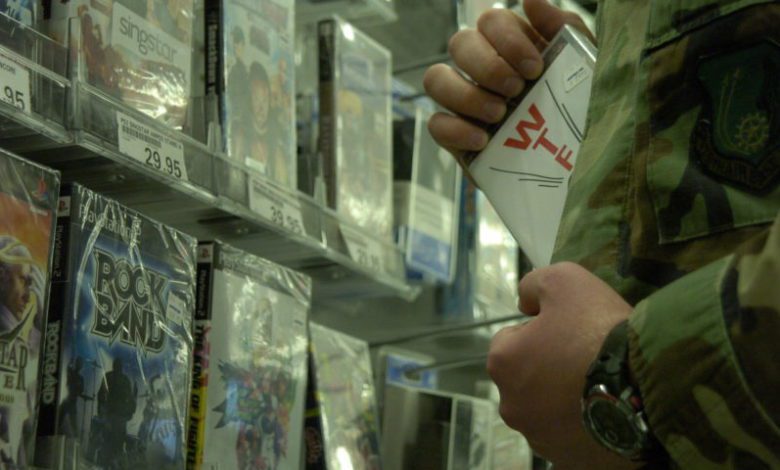Top security measures to combat shoplifting

Retailers have recently reported that they are increasingly dealing with a problem of shoplifting in addition to the rising cost of living issues and inflation. Police recorded 342,343 shoplifting offences in England and Wales in 2022/23, up 24% on the previous 12 months. Additionally, according to Co-op’s newly published data, 2023 saw the highest levels of retail crime, stealing, and anti-social behaviour, with the store logging nearly 1,000 instances every day.
Nicki Juniper, head of security for the John Lewis Partnership, says: “Shoplifting isn’t a victimless crime; it costs the sector more than £1bn a year, driving up prices for genuine customers. Likewise, some shoplifters are aggressive or threatening to retail staff – which is unacceptable.” However, in order to combat the issue of shoplifters, here are a few security measures that can prove to be effective in safeguarding retail stores.
Implement shoplifting policies and staff training:
To handle any shoplifting incident, retailers must have a comprehensive shoplifting policy and risk assessment in place and train their employees on how to implement these policies. The shoplifting policies and training will enable staff to identify a shoplifter and what to do if they witness an individual shoplifting.
Implementing shoplifting policies also helps establish clear protocols for reporting and handling suspected shoplifting incidents, including who to notify and how to gather evidence without putting themselves at risk. It is also essential that employees are trained regularly so that they are better equipped to protect the store’s assets without compromising their safety.
Additionally staff members should greet and engage with their customers. This may deter a shoplifter from stealing as it sends out a message that the staff are paying attention. John Lewis among many other retail stores is training its partners on ‘love bombing’ – where it deters would-be shoplifters through friendly, attentive customer service.
Crime mapping
Crime mapping can be an effective technique at reducing thefts as it allows you to identify the areas of your store where it happens most frequently. Keeping records of location, dates, times and CCTV of incidents or suspicious behaviour can help discover patterns and provide evidence.
Retailers can then address whether this is a surveillance blackspot, whether shelves could be lowered, or if it should be moved to a more visible part of the building. Once you understand where your weak points are, you can take measures to address them.
Store layout and display
Another crucial measure to protect retail stores from shoplifters is to optimise store layout by maximising visibility and minimising blindspots. Keeping the store tidy and well organised will help staff have a clear sight throughout the store.
Placing mirrors around the store can also act as a deterrent for potential theft. Meanwhile, strategically placing CCTV cameras, installing better lighting and placing the cash registers by the door will help capture any suspicious activity. Keeping lower displays will also enhance surveillance.
Another way to reduce incidents of customer theft is to use product placement to create an environment that is less conducive to shoplifting. For instance, retailers should ideally place items that are frequently stolen, such as electronics or cosmetics, in locked display cases or near the front of the store or cash registers.
Co-op has extended its experiment of dummy, empty, anti-theft display packaging for specific products on its shelves in an effort to discourage rising crime rates caused by habitual and persistent offenders.
Surveillance systems
Installing security cameras provides an added layer of security as it helps present evidence for investigations. The effectiveness of contemporary surveillance systems in deterring theft can be further increased by integrating them with innovative technologies like facial recognition software.
Retailers should also tag their items with ‘Electronic Article Surveillance’. An anti-theft tagging system allows you to tag products so an alarm will sound if someone walks out without paying. Roaming CCTV devices instead of CCTV podiums should also be considered. John Lewis has introduced body-worn CCTV cameras across its estate. Not only do these help deter would-be shoplifters and defuse potentially difficult situations (keeping Partners safe), in instances where crimes do occur, they give us solid evidence to share with local police forces and help drive prosecutions
Signs stating CCTV is in use and shoplifters will be prosecuted can also help reduce theft.
Conduct regular audits
If you don’t know what you have in stock, it’ll be challenging to know if something has been stolen. Keeping track of store’s stock and inventory will help identify any theft or patterns of theft.
Regular inventory audits maintain accuracy, revealing discrepancies that may indicate theft or errors. Shrinkage assessments help quantify losses, allowing targeted strategies for high-risk areas. Compliance checks ensure security measures are in place, and online transaction audits detect fraudulent activities in the digital space. Audits also promote employee accountability, evaluate process efficiency, and extend to vendor relationships for supply chain integrity.
Deploy retail officers
In addition to placing CCTV cameras throughout the store, having physical security guards manning the doors and patrolling the aisles will help discourage thieves from committing a crime. Having them around also makes customers feel secure while shopping.
These guards are specially trained and qualified in handling difficult situations, ultimately taking the stress away from the rest of the staff who may not have the experience or training to handle these kinds of situations.
It’s also recommended that the placement of retail security guards be reviewed and adjusted regularly. Monitoring and optimising retail security in this way will ensure that the security guards are in the most effective positions to stop shoplifters.











